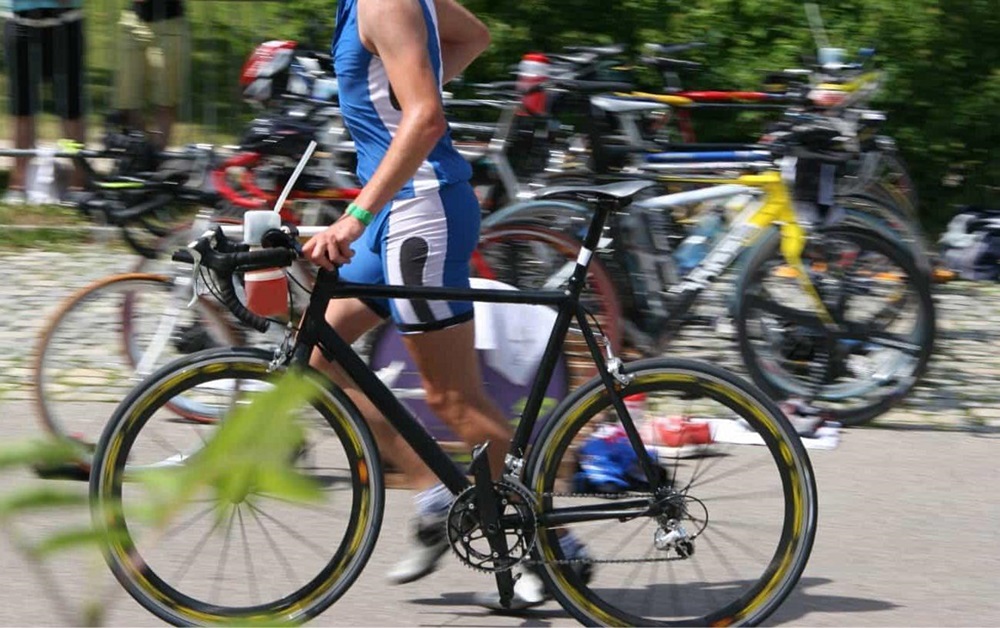Last Updated on: 18th December 2024, 12:29 pm
A triathlon consists of three segments: swimming, cycling, and running. Each segment requires specific skills and preparation. Triathlons vary in distance, allowing participants to choose based on their fitness level:
- Sprint distance: 750m swim, 20km bike, 5km run. Ideal for beginners.
- Olympic distance: 1.5km swim, 40km bike, 10km run. Standard international distance.
- Half Ironman: 1.9km swim, 90km bike, 21.1km run. For advanced athletes.
- Ironman: 3.8km swim, 180km bike, 42.2km run. Ultimate endurance test.
Choose your race distance wisely, as each requires tailored training and preparation. Understanding the demands of your chosen distance is essential for effective training and race day success.
Setting Realistic Goals

Setting achievable goals is crucial for triathlon training. Start by assessing your current fitness level. This assessment helps in setting realistic targets that are challenging yet attainable. Goals guide your training, providing focus and motivation. They should be specific, measurable, and time-bound, helping you track progress and adjust as needed. As you meet each goal, your confidence and performance will improve, preparing you for race day.
Creating a Training Plan
The FITT Principle
A structured training plan is essential, following the FITT principle: frequency, intensity, time, and type. This ensures a balanced approach:
- Frequency: Number of training sessions per week.
- Intensity: Effort level of each session.
- Time: Duration of each session.
- Type: Specific exercises for each discipline.
Incorporating Disciplines
Include swimming, cycling, and running in your training. This prepares you for the transitions and demands of race day, ensuring comprehensive fitness development.
Customizing Your Schedule
Align your training schedule with your lifestyle. Identify available times and build your plan around them. Flexibility is key; adjust as needed to maintain balance.
The Role of Rest and Recovery
Incorporate rest and recovery into your plan. These are crucial for preventing injuries and improving performance. Listen to your body and allow time for recovery.
Gear and Equipment Essentials

Proper gear is essential for triathlon success. Key equipment includes:
- Triathlon suit: Should fit snugly for reduced drag.
- Bike: Must match your body geometry for efficiency.
- Running shoes: Choose based on your gait for support.
- Wetsuits: Provide buoyancy and warmth for open water swimming.
- Goggles: Ensure clear vision and comfort.
- Bike accessories: Aerodynamic helmets and puncture-resistant tires enhance performance.
Invest in quality gear to improve comfort and efficiency, allowing you to focus on the race.
Nutrition and Hydration Strategies

Proper nutrition and hydration are vital for training and race performance.
Basic Nutrition Guidelines for Triathletes
Before training, eat a balanced meal with carbohydrates and proteins 2-3 hours prior. During training, consume small, carbohydrate-rich snacks or drinks to maintain energy. After training, focus on recovery with a mix of carbohydrates and proteins within 30 minutes.
Hydration Strategies to Prevent Dehydration
Stay hydrated by drinking regularly. Replace fluids lost through sweat and consider electrolyte replacement during longer sessions.
Tips for Practicing Nutrition and Hydration During Training
Practice your nutrition and hydration strategy during training to find what works best for you. Consistency will make these strategies second nature on race day.
Mental Preparation and Race Day Strategy

Mental preparation is as important as physical training. Build mental resilience by setting small targets during training. Develop a race day strategy focusing on pacing, transitions, and adaptability. Manage pre-race nerves with techniques like deep breathing and visualization. Stay focused on the present and adapt to any challenges during the race.
Post-Race Recovery and Reflection

Post-race recovery is crucial for healing and learning from the experience.
Physical Recovery Tips
- Consume a balanced mix of proteins and carbohydrates soon after the race.
- Rehydrate to replace lost fluids.
- Rest to allow for deep recovery.
- Engage in gentle movements like walking or stretching to ease stiffness.
Reflecting on Your Performance
Reflect on your race performance to identify achievements and areas for improvement. Use this reflection to set future goals.
The Role of Feedback
Seek feedback from coaches or fellow athletes to gain new perspectives and refine your training approach.
Summing Up
Triathlon is a journey of self-discovery and achievement. It requires strategic planning, mental resilience, and the right gear. From setting goals to mastering nutrition, each aspect prepares you for race day. Let your first triathlon be a stepping stone to further challenges and a testament to your strength.

